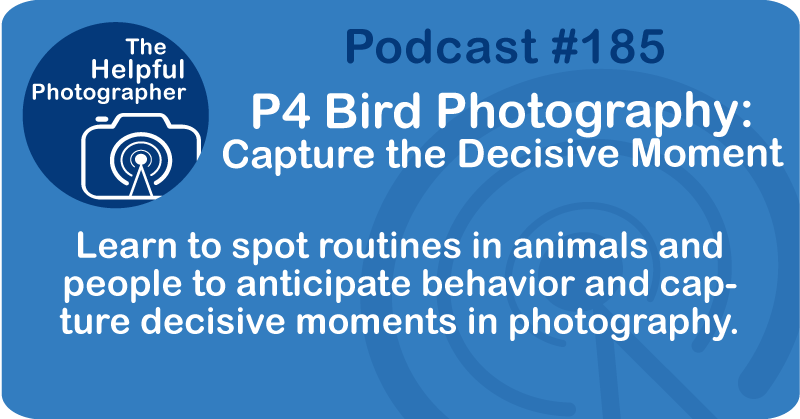P4 Bird Photography: Capture the Decisive Moment #185

This is part four of a six-part series on bird photography. In our last episode, I dove into hummingbirds, how to anticipate their flight patterns, why I stick with shutter speeds of one four thousandth of a second or faster, and how light and behavior can make or break your shot.
If you missed that one, definitely go back. It'll give you some great context for what I'm covering today. Because today, it's all about learning animal routines. Whether you're photographing birds, mammals, or even people on the street, it's the same. Every living thing has habits. If you take the time to observe those habits, you'll often know what's about to happen before it does. That's the real secret in capturing the decisive moment.
Let me give you a couple of examples. Back in Colombia, we spent some time photographing tanagers. These little guys were incredibly colorful, but they're also really skittish. If you walk up with your camera guns a-blazing, you'll never get a shot. But if you sit back and just watch, you'll notice something. They often cycle through the same perches. They'll fly to one branch, grab a bite, and then return a few minutes later.
Once you recognize the routine, you can position yourself ahead of time, set your focus, and wait. Same thing with monkeys. At our ecolodge in Colombia, there was a troop of spider monkeys that would climb around the trees. At first, they seemed totally random, bouncing from tree to tree. But we were told that every day between about four and five o'clock, they would come from the north side of the property and head south, climbing from tree to tree. And there was one section where they had to make a leap every single time. It was such a regular event, we called it the Monkey Happy Hour, especially because it was pretty close to the bar.
And the thing is, it's not just monkeys. When we do our street photography safaris here in New York City, we teach this concept. People are creatures of habit. Think about someone waiting for a bus. They'll shift their weight, check their phone, glance up the street. None of that is random.
If you watch where people are selling things, you'll get a buyer who picks out some fruit, hand it over to a vendor along with some money. The vendor returns the groceries all bagged up and then the change. If you study these patterns, you can frame your shot so that when the gesture happens again, you're ready.
So here's my advice. Slow down and watch. Don't just chase the shot. Study the behavior first. Look for cycles. Animals and people often repeat movements or routines. Pre-focus and pre-compose. Once you know the spot or action that's coming, set yourself up in advance. Be patient. This is the hard part, but it pays off. One of my favorite sayings is, if you saw it, you missed it. By the time you react to a moment, it's usually gone. But if you've studied the routine, you can be there just before it happens.
That's when you capture those really magical frames. All right, so that's routines. In episode five, we're gonna drill down into one of the biggest challenges in bird photography, anticipating flight. It's one thing to catch a bird on a stick, but getting it in the air, that's where the real fun and frustration begins. I'll share my strategies for timing takeoffs and make sure your settings are ready before the bird takes off.











